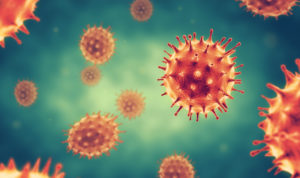
Deep Learning Targets Drug Combos for COVID-19

Using computational biology to identify individual therapeutics that might prove effective in the fight against COVID-19 is already a daunting task, with billions of candidate molecules. Throw drug combinations into the mix, and the compounding compounds make the task exponentially more difficult. Researchers have been employing deep learning to help whittle down the lists and identify promising drug combinations, and now, a team from MIT’s Computer Science and Artificial Intelligence Laboratory (CSAIL) has applied a deep learning technique to identify two drug combinations that could help patients recover faster from COVID-19.
“Unfortunately, there are two primary challenges that prevent one from applying existing deep learning approaches to predict therapeutic chemical combinations for emerging pathogens such as SARS-CoV-2,” the researchers wrote. “First, deep neural networks require a large amount of training data with measured synergy scores. While such data are readily available for some diseases such as cancer … the amount of SARS-CoV-2 drug combination data (5) is very limited.”
Second, they wrote, “even the largest combination screen for cancer covers only around 100 different molecules, since the number of pairwise combinations grows quadratically.”
To combat these roadblocks, the researchers developed a deep learning architecture called ComboNet that “jointly models molecular structure, as well as biological targets, for the purpose of predicting synergistic drug combinations,” working under the hypothesis that explicitly modeling the drug-target interactions would decrease the necessity of extensive data on combination synergy.
“By modeling interactions between drugs and biological targets, we can significantly decrease the dependence on combination synergy data,” says Wengong Jin, a postdoc at MIT’s Broad Institute and lead author of the paper. “In contrast to previous approaches using drug-target interaction as fixed descriptors, our method learns to predict drug-target interaction from molecular structures. This is advantageous since a large proportion of compounds have incomplete drug-target interaction information.”
The researchers evaluated ComboNet several ways, including through testing in silico repurposing of 30 tested combinations. Through this testing, they identified two combinations with strong in vitro synergy: remdesivir and reserpine, and remdesivir and IQ-1S.
“In general, ComboNet represents an advance toward predicting novel chemical−chemical synergy for instances where minimal combination training data exist,” the authors wrote. Next, they hope to incorporate additional data on protein interactions and gene regulatory networks. They also plan to investigate the use of active learning, which helps to reduce models’ biases towards certain chemical spaces and increase accuracy.
The research discussed in this article was published as “Deep learning identifies synergistic drug combinations for treating COVID-19” in the September 2021 issue of PNAS. The paper, which is available here, was written by Wengong Jin, Jonathan M. Stokes, Richard T. Eastman, Zina Itkin, Alexey V. Zakharov, James J. Collins, Tommi S. Jaakkola, and Regina Barzilay.































